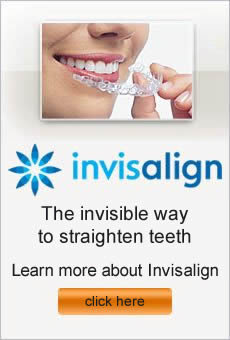As a parent, you want your child to have the healthiest teeth possible. Here are some tips for you to consider as you strive to help your child achieve this oral health goal.
Teach oral hygiene
Helping your children take care of their teeth should start at a very early age, so that proper hygiene habits are learned and practiced throughout life. Begin brushing their gums with a soft toothbrush even before the first tooth erupts to prevent bacteria from building up. Once your child is old enough to brush, allow them to do it with supervision until about age eight. Also teach your child to floss properly as part of a daily dental care routine.
Choose the right toothpaste
Look for the key ingredient of fluoride in toothpaste, which helps fight bacteria and plaque. When your child is young, supervise the use of fluoride toothpaste so that none is swallowed.
Visit the dentist
Begin taking your child for dental visits around their first birthday, and continue with regular checkups twice a year. Early dental visits help your child become comfortable with the process, and allow the dentist to watch for oral health problems so that they can be treated as soon as possible.
Avoid bedtime bottles
Do not give your child bottles filled with milk, fruit juice, or soda at bedtime. The sugars in these drinks can harm teeth and cause decay, and prolonged exposure to them such as overnight makes it even more hazardous.
Consider sealants
Ask your dentist about applying sealants to your child’s teeth in order to help prevent decay and cavities. Usually applied by your dentist to the chewing surfaces of back teeth, sealants help keep food and bacteria out of areas where decay most often occurs. Sealants are a painless way to help protect your child’s teeth.
Most orthodontists recommend that you take your child for their first visit around age seven. That may seem early since your child is still losing baby teeth, but many conditions can be identified by this age. Early treatment may be helpful in preventing worse problems later. Here are some things that an orthodontist will look for in your child, with the goal of making their smile as beautiful as possible in the end.
Tooth loss and eruption
Because teeth should usually be lost in a certain order, changes from this pattern may point to developmental issues. The same thing goes for tooth eruption, so your orthodontist will watch to make sure teeth are coming in appropriately. If there are more or less teeth than expected, your child may have issues with crowding, extra, or missing teeth. Your orthodontist might suggest removing a baby tooth early or holding an empty space where a tooth came out so that the rest of the teeth will fit correctly.
Alignment
Crooked teeth are more likely to wear unevenly, and the gums may also be damaged. Even though teeth can be aligned later, it’s often best to begin correction before teeth and gums are harmed. Also, your child’s self-esteem may benefit by having teeth that aren’t so noticeably misaligned.
Spacing and crowding
It’s possible by age seven to determine if your child’s teeth are excessively crowded or spaced. Gaps can result from early tooth loss, undeveloped teeth, or small teeth. Crowding may require tooth extraction or arch expansion to make room for all of your child’s teeth.
Bites
The severity of bite issues can be reduced by orthodontic treatment at an age as young as seven. Even though permanent correction might not be achieved until growth is complete, there are actions that can be taken while your child is still growing. This is true for all kinds of bite problems, including overbites, underbites, and crossbites.
Problems with your bite, or the way your teeth and jaw fit together, can wreak havoc on your mouth. It can be painful, unattractive, and lead to other problems like tooth decay. A bad bite, or malocclusion, is one of the most common reasons that orthodontists fit patients with braces.
What does it mean to have a bad bite?
When your doctor says you have spacing or alignment problems, it’s likely that you have a bad bite. This includes crooked, crowded, or protruding teeth. A bad bite also includes having your upper and lower jaws meet improperly, even if your teeth look straight. Also, bite problems can be caused by teeth that are too close together or too far apart.
What causes bite problems?
The most common causes of bite problems are thumb-sucking, heredity, early tooth loss, and mouth trauma.
What are the benefits of correcting bad bites?
Braces can help with problems related to bite issues in a number of ways, including:
• Appearance – correcting a bad bite creates a more appealing smile, and therefore also improves your self-esteem.
• Tooth wear – an uneven bite can cause abnormal tooth wear, which sometimes leads to the need for crowns or veneers. Braces can correct this problem before your teeth have a chance to wear inappropriately.
• Jaw problems – a misaligned bite can lead to painful conditions like temporomandibular joint (TMJ) disorder.
• Teeth cleaning – it is difficult to clean crooked, crowded, protruding, and overlapping teeth. Properly aligned teeth can be more thoroughly cleaned, and therefore have less decay.
The spookiest night of the year is drawing close, and your little ghouls and goblins will be heading out to scare the neighbors and score some treats. You probably already know most of the safety rules when it comes to trick-or-treating, such as carrying a flashlight and wearing light-colored or reflective costumes. Another big one is inspecting the treats before your kids dig in, to make sure all the candy is safe. However, have you thought about looking at the candy for the purpose of making sure it’s acceptable for your child’s braces-clad teeth?
Your child’s orthodontist probably warned you to steer clear of certain foods that are known to commonly break or bend braces. Some of these items are pretty easy to avoid most of the time, but a jack-o-lantern full of candy can be very tempting. Many of the popular treats that your child may collect when trick-or-treating fit the guidelines of being hazardous to teeth undergoing orthodontic treatment. Here are some items to avoid:
• All hard candies
• All chewy candies
• Nuts
• Licorice
• Caramel
• Taffy
• Jelly beans
• Bubblegum
• Popcorn
• Hard pretzels
• Caramel and candy apples
This may seem like a list that will take all the fun out of Halloween, but there are still many treats that your child can enjoy. Some braces-friendly examples are plain chocolate candy, peanut butter cups, sliced apples, and soft cookies and cupcakes. Just remember to look for treats that aren’t sticky, chewy, hard, or crunchy. Also, most parents tend to give their children a free pass about indulging in sweets on Halloween, but don’t forget your regular brushing and flossing routine. Maintaining healthy teeth will help you have a hauntingly good time on Halloween, and throughout the year!
Just look around and you’ll notice that braces are very common, for both the young and not-so-young. Whether you’re 12 or 40, many of us find ourselves taking the plunge into orthodontic treatment. You might as well make the most of it, and these tips may help.
Accept it
You may not have a choice if your parents are making you get braces, or maybe it’s your own choice to get rid of jaw pain or headaches. Either way, focus on the fact that your teeth are going to look great in the end.
Shop around for the right orthodontist
It is likely that you have a number of orthodontist offices to choose from in your area, so find the one that meets your needs. Referrals from friends and family may be helpful. Many dentists have websites that highlight features of their practice or even a Facebook page where you can read real patient testimonials.
Ask questions
Educate yourself by researching on the internet and asking questions at the office. Get explanations of the work being done on you and why.
Relax
No need to panic when it’s time to get your braces. It’s not a painful process, it’s just somewhat uncomfortable. Understanding what the doctor is doing at all times may give you a feeling of control, so don’t hesitate to inquire about each step of the process.
Have fun with colors
If you get elastics on your braces, pick your favorite colors! You’ll enjoy wearing them more if you’re having fun with the colors on your teeth.
Follow your orthodontist’s instructions
You can minimize your treatment time by following doctor’s orders about wearing elastics, headgear, or other appliances. Also make sure you clean your braces as suggested, so that you’ll avoid tooth stains or gum problems.



